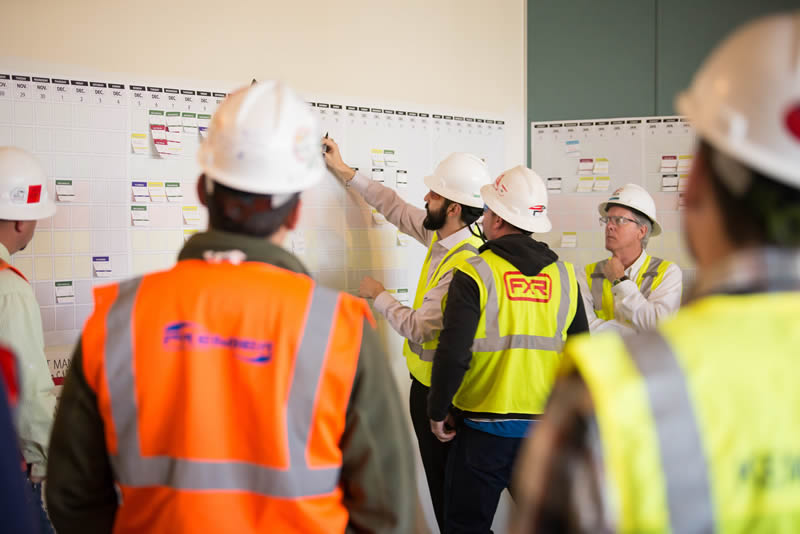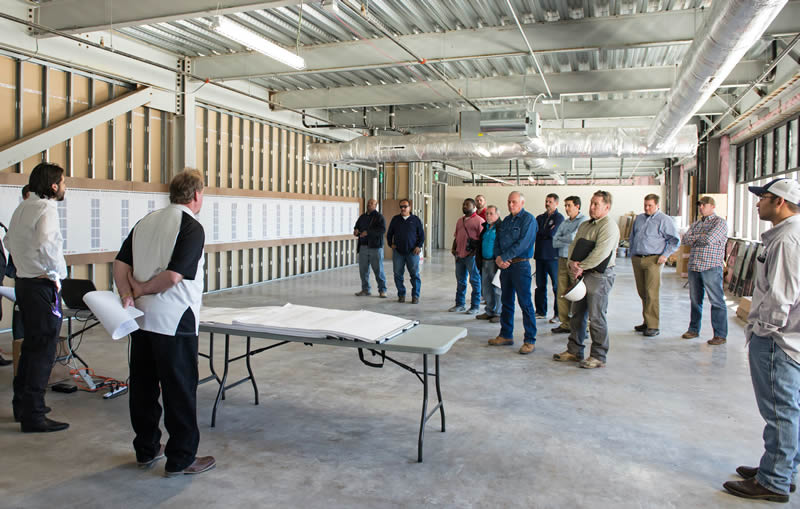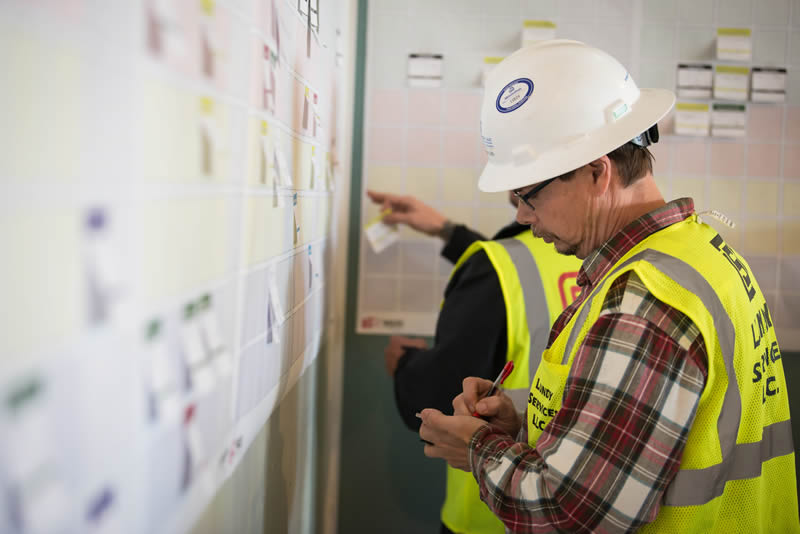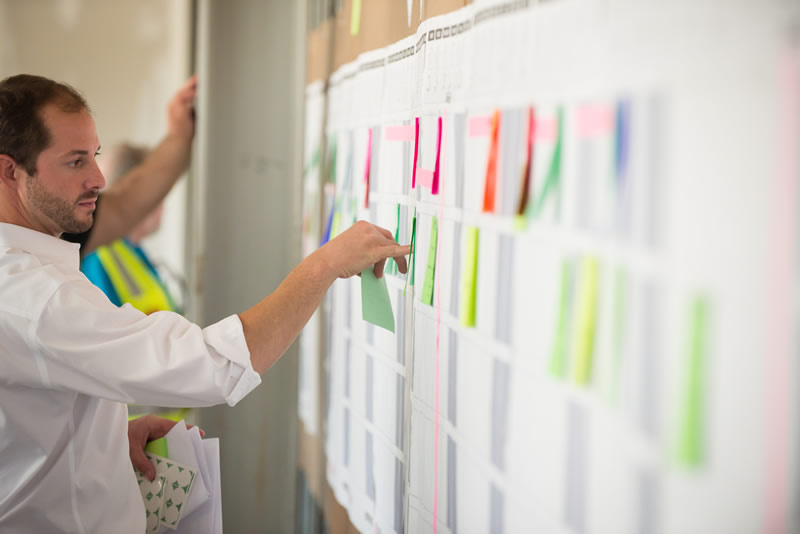In our blog 4 Best Practices for Your Next Pull Plan Session, Lean Construction expert Keyan Zandy outlines pull planning best practices that help project teams achieve smoother, more collaborative scheduling sessions. Drawing on years of field experience, Zandy breaks down the key phases of a successful pull plan—from setting clear expectations during onboarding and guiding trades through card creation, to facilitating the board posting process and conducting a thorough recap. His practical insights ensure each session builds team alignment, optimizes workflow, and strengthens commitment to reliable handoffs, making this an essential read for field leaders seeking to improve schedule reliability.
Pull Planning Best Practices
I’ve had plenty of bad pull plan experiences over the years—ones that ended in confusion/frustration, or where we forgot to invite critical trades, or where the sticky notes kept falling off the walls. But even when they weren’t ideal, the last planners still gained value from the pull plan process, and so did I. Through the lessons we learn and share via a plus/delta after these work sessions, we began to make a list of pull planning tips to make sure our sessions run more smoothly. If you are looking to improve upon your pull planning skills please start by reading 4 Helpful Hints Before You Pull Plan. Below are pull planning best practices for running an effective pull plan session.
Part One – The Pull Plan Onboard (introductions & ground rules)
- Once the trades have arrived and signed in, the pull plan facilitator should start the meeting by asking the attendees to introduce themselves. If it is the first pull with a new team, a quick icebreaker may be a great way to get things started.
- The facilitator should poll the room to understand who has and has not been involved in a pull plan session before. This will help them identify who may need more coaching and guidance during the session.
- The facilitator needs to describe to the team what pull planning is and make sure everyone understands that the team will work from the end milestone back to the starting milestone.
- The facilitator will emphasize goals for the session, which are to:
- plan collaboratively;
- make commitments to one another on the tasks, durations, and handoffs;
- optimize flow; and
- identify, discuss, and solve constraints that may affect commitments.
Part Two – Filling out cards
- Be sure that each trade partner has a different color sticky pad and that they write the name of their trade on top. Another option is to have stickies premade that segment the trade name, activity, duration, and handoff.
- As trades begin filling out their cards, the facilitator should help the team think through their workflow in a push sequence, since it is sometimes difficult for last planners to think in a pull sequence when just getting started.
- The facilitator should make sure everyone understands that every card has a predecessor card, and that the “handoff” is what is needed to be complete before work can start.
- The facilitator should remind the team that the cards should have enough detail on them so that if someone who did not attend the session read the card, they should easily understand the activity, duration, and handoff.
- Make sure that no durations take longer than ten days. If they do, have the last planners break it into multiple cards to allow succeeding activities to begin sooner, which can optimize the schedule.
- While trades are filling out cards, the facilitator’s job is to work their way around the room making sure that the last planner’s questions are being answered and the required information is adequate and legibly written.
Part Three – Posting cards and pulling back
- Have trade partners come up to the board and start by placing the final activity at the end (far right side of the pull plan board). Make sure the teams know the cards are based on the end of the activity and represent the final day of the activity, not the beginning.
- As trades place their cards on the board, pulling back from the final activity, it is good practice to use “swim lanes,” which may be allocated by system or area. The benefit of swim lanes is that it helps organize the information to make sure people do not get confused or lost in the planning process.
- The facilitator should help trades post cards when needed, and make sure the last planners are interacting and verbally stating what handoff they need completed to begin their work. They should also be doing quality control to make sure the cards are correctly placed on the board. Finally, the facilitator should monitor the room to make sure everyone is engaged and that there is not a lot of unrelated conversation.
Part Four – The recap
- Once all the pull plan cards are on the wall and the critical handoffs are established and committed to, the facilitator will walk the team backwards through the logic one
last time asking for a verbal confirmation that the trade partners agree with the durations and the necessary handoffs for the work to completed. - The facilitator must confirm/check to see if the duration meets the contractual duration. It is important that last planners do not add any buffer or float to their durations, as it could have major impacts to the schedule.
- If the pull plan shows a shorter duration of time than the original schedule, those extra days will be considered “team float,” that can either be used to offset missed commitments throughout the milestone or be used in future milestone phases.
- If the duration is longer, the team will review durations card by card to fully ensure there is no built-in float and look for ways to re-phase or allow critical path items to begin sooner. This can be done by breaking longer duration cards into more activities. Sometimes this can be done in the same meeting, and sometimes this needs to be done in another session based on how long and tedious the pull plan was. If the team decides there is no other way to re-phase work or work extra hours to complete the original duration, then the team will know that they will have to look to make up those extra days in a future pull plan session.
- After recapping the pull, the facilitator will read through the constraint list. This is where they recorded items that will need to be resolved to allow the flow sequencing to occur. The facilitator will also read through the parking lot items (important side conversations that were not relevant to the pull plan but that were written down for further discussion), and make sure a champion is assigned to set up a future meeting to review.
- When trades have been dismissed, the facilitator needs to take photographs of all boards as documentation. Later, these dates will be added back into the master schedule and distributed to the trades weekly as a six- week schedule.
If you are wondering how the above will work while we are in the pandemic, please read 3 Ways to Pull Plan during the COVID-19 Pandemic. Also, stay tuned for the final part to this series, where we will discuss helpful tips for what to do after your pull plan session.
By: Keyan Zandy, COO
Skiles Group
For more from Keyan, see The Lean Builder – A Builder’s Guide to Applying Lean Tools in the Field or Connect with Keyan on LinkedIn.












